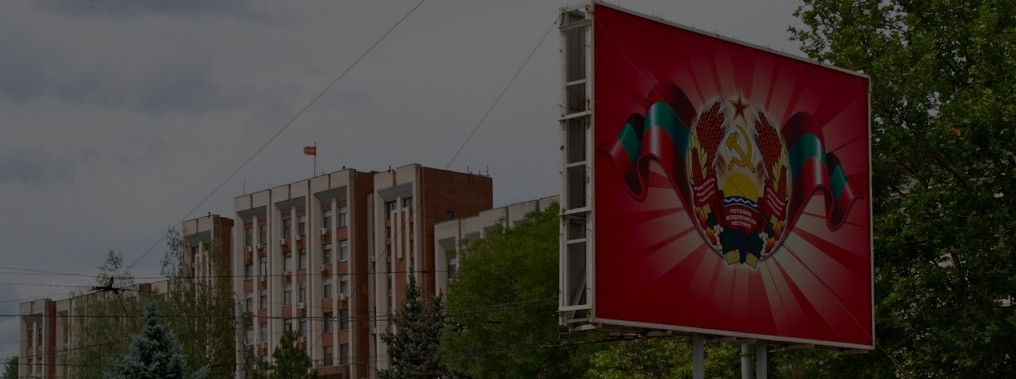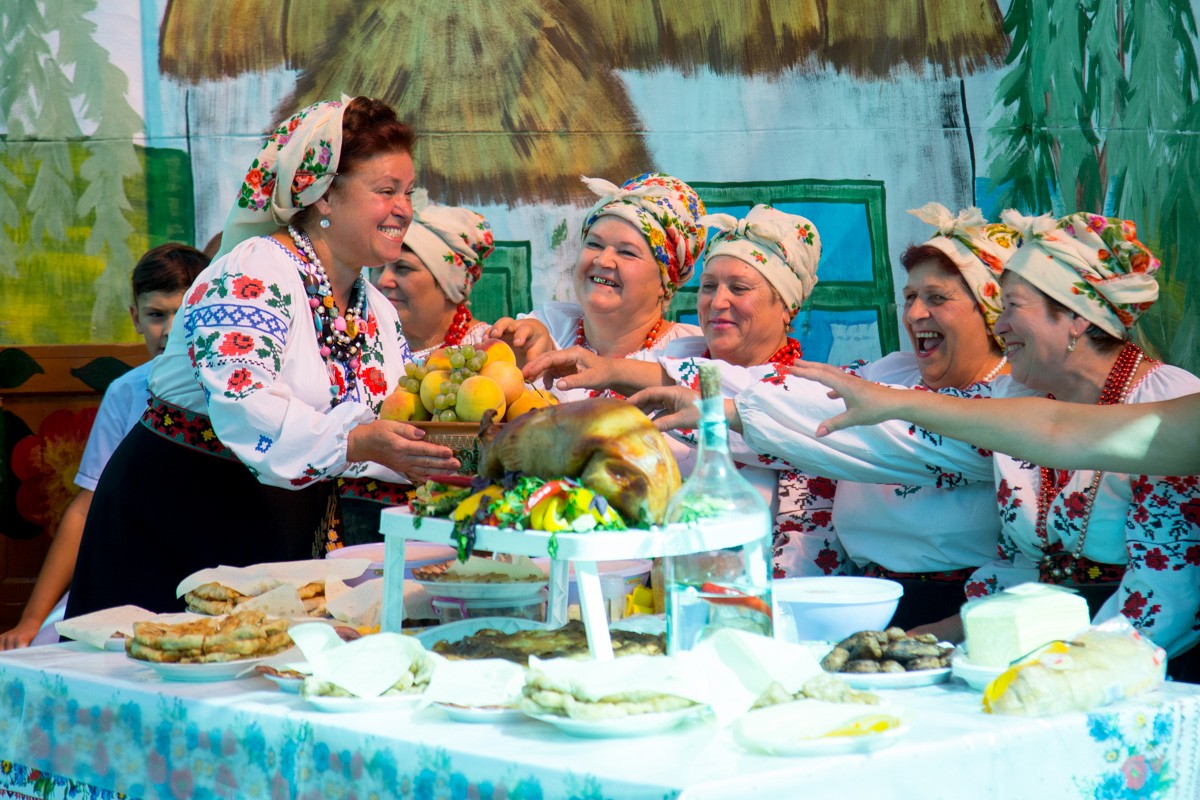
Basic facts
Basic facts
The Pridnestrovian Moldavian Republic (Pridnestrovie) is a state in the south-eastern part of Europe. Most of its territory is situated on the left bank of the Dniester River within the former Moldavian SSR. Pridnestrovie also includes several settlements on the right bank - the city of Bendery with adjacent villages, as well as the villages of Slobodzeya district: Kopanka, Kitskany, Mereneshty, Kremenchug.
The country borders the Republic of Moldova (the total length of the border is 411 km) in the west and Ukraine (405 km) in the southeast. It has no direct access to the sea; however, the port of Odessa is located within 110 km from the capital of Pridnestrovie.
Total area: 4,163 sq. km.
The state system: a unitary state, which consists of 7 administrative-territorial units, including 5 districts: Kamenka, Rybnitsa, Dubossary, Grigoriopol, Slobodzeya; 2 cities of republican subordination: Tiraspol (with the satellite city of Dnestrovsk) and Bendery.
Capital: Tiraspol (144,000 people)
According to the Ministry of Economic Development of the PMR, the population of Pridnestrovie was 470,600 as of 2016, of which 70.1% lived in cities, and 29.9% in rural areas. The population density is quite high: 134.7 people per 1 sq km. Most of them are women: 257,000 (54.6%); the number of men amounts to 213,600 (45.3%).
Pridnestrovie is a multinational state. Three ethnic groups form the majority: Russians (160,000), Moldovans (153,300) and Ukrainians (125,700). Among other nationalities living in the PMR are Bulgarians, Jews, Germans, Poles, Belarusians, Gagauzians, etc.
At the same time, as evidenced by a sociological survey conducted in 2016, more than half of the Pridnestrovian residents prefer to identify themselves on a citizenship rather than ethnic basis.
Thus, 53.1% of respondents chose the answer "I am a Pridnestrovian". 25.1% of the total number of respondents identified themselves as Russians; 9.7% as Moldovans; 5.9% as Ukrainians.
There are three official languages in Pridnestrovie: Moldavian, Russian and Ukrainian.
The majority of the population professes Christianity (Russian Orthodox Church).
National currency: Pridnestrovian rouble
Holidays and memorable dates
There are 9 official holidays: New Year's Day (1 and 2 January), Christmas (7 January), Fatherland Defender's Day (23 February), International Women's Day (8 March), Labour Day (1 and 2 May), Victory Day (9 May), Republic Day (2 September), Great October Revolution anniversary (7 November) and Constitution Day, which is celebrated on 24 December, but it is not an official day-off.
Pridnestrovie also widely celebrates the Day of Russia (12 June), the Day of the Russian Flag (22 August) and the Day of National Unity (4 November), but these holidays are not days-off either.
Among the memorable dates, 2 March is of special significance for the country: on this day in 1992, Moldova launched a large-scale armed aggression against Pridnestrovie.
19 June is the anniversary of the Bendery tragedy: on this day the riot police and carbineers of Moldova (OPON) attacked Bendery, marking the beginning of the bloodiest episode of the Moldovan-Pridnestrovian conflict.
29 July is the Day of the Entry of the Peacekeeping Forces of the Russian Federation.
1 August is the Day of Remembrance and Sorrow, dedicated to all those who died in the confrontation with Moldova.
International political situation
The formation of the Pridnestrovian Moldavian Republic became a natural consequence of the processes that began as a result of the collapse of the Soviet Union. It was an important decision that reflected the people's will expressed at a popular referendum and helped to protect the legitimate interests of Pridnestrovians, to preserve centuries-old historical and cultural traditions, to secure the people's right to live in the land of their ancestors, to afford ground for the equal development of all nations living here.
A genocide policy pursued by the Republic of Moldova resulted in its full-scale military aggression against Pridnestrovie. In 1992, during the armed conflict, hundreds of Pridnestrovian citizens were killed; tens of thousands lost their homes, becoming refugees.
The need for a settlement of relations based on the desire to prevent a recurrence of the armed conflict predetermined the beginning of negotiations between the Pridnestrovian Moldavian Republic and the Republic of Moldova two years after the end of the armed aggression.
One of the main objectives of Pridnestrovie's foreign policy is to strengthen stability and security in the region. To achieve this, the mechanism of a peacekeeping operation is actively used today, including the Joint Peacekeeping Forces and the Joint Control Commission, as well as the mediation of authoritative states and international organizations.
Currently, in addition to the parties to the conflict themselves - Moldova and Pridnestrovie, five other actors are taking part in the Moldovan-Pridnestrovian settlement: the Russian Federation and Ukraine as guarantor states, the OSCE as an intermediary, the European Union and the United States as observers in an advisory format of the "Permanent meeting on political issues in the negotiation process on the Pridnestrovyen settlement" ('5 +2' format).
Modern Pridnestrovie seeks to develop multi-level bilateral relations primarily with Russia and Ukraine, as well as with other foreign countries, which are based on objective consideration of mutual interests, a balanced and pragmatic approach, an understanding of current realities and current trends in international relations.
Economic indicators
Pridnestrovie's gross domestic product (GDP) was 20.95 billion roubles in 2016.
Foreign trade turnover in 2016 amounted to $1.38 billion, with $998.4 million (71.9%) accounting for the CIS and $389.8 million (28.1%) for other countries.
Pridnestrovie's exports amounted to $530.4 million, with $356.4 million worth of goods (67.2%) supplied to the CIS countries and $174 million worth (32.8%) sold to other states.
Electricity supplies top the commodity structure of exports. In 2016, fuel and energy accounted for 35%, light industry products 20%, metallurgy and food industry 16%.
The total volume of imports in 2016 amounted to $857.8 million. Almost 75% of goods were imported from the CIS countries. In the commodity structure of imports, the first place belongs to petroleum products (47.7%), followed by food (almost 12%) and engineering products (10%).
Manufacturing
Industrial production dominates the economy of the Pridnestrovian Moldavian Republic. More than 37,000 people are employed in manufacturing. Its basis is formed by 110 enterprises. There are more than 500 small-business enterprises engaged in manufacturing. Pridnestrovian industrial enterprises maintain trade and economic relations with almost 90 countries of the world, constantly improving and expanding the structure of trade turnover.
The total industrial output in 2016 amounted to 8 billion 573 million roubles, with 41.4% of this sum accounting for the electricity sector, 18.2% for black metallurgy, 14.1% for light industry, 12.2% for food, 6% for construction materials, 4.4% for machine building and metalworking, 2% for the chemical industry.
Agriculture
The total area of agricultural land in 2016 was 262,700 hectares, another 30,000 and 9,300 hectares are occupied by forest and water, respectively. There are 19 natural reserves and natural sanctuaries in Pridnestrovie. The area of natural reserves is 4,900 hectares The number of protected rare and endangered plant species is 176; the number of protected animals is 243.
The total sown area in 2016 was more than 195,000 hectares, of which about 63% accounted for cereals; 32% was occupied by technical crops; 1.4% by vegetables and melons, and 3% by fodder crops.
Labour force
The number of able-bodied population (men aged 16-60 years and women aged 16-55 years) in Pridnestrovie is 257,400 people. Another 24,700 accounts for employed older citizens and adolescents. Thus, the total volume of the country's labour force is 282,100 people. 136,600 of them accounted for the economically active population (working or looking for work). The number of able-bodied economically inactive population is 145,600 people. The level of officially registered unemployment at the end of 2016 was 3.1%.
47.8% of the total number of employed in the economy work in the public sector (without taking into account law enforcement structures and customs bodies); 52.2% work in the private sector.
The largest share of the employed accounts for the industrial sector (20.8%); 18% of the employees work in the sphere of trade and public catering; 16.1% in education; 10.5% in health and social services; 6.6% in the economy; 6.5% in transport and communications; 6.4% in housing and communal services; 3% in culture and arts; 2.1% in the banking sector; the share of other industries is insignificant.
Transport
The total length of public railways in Pridnestrovie is 114 km; the shipping routes 66 km. The length of motor roads is 1,511 km, of which 1,470 km accounts for hard-surfaced roads. The length of trolleybus lines (in Tiraspol and Bendery) is 131 km.
Communication
To call in Pridnestrovie from abroad, one should first dial the phone code (+373), then a code of a Pridnestrovian city or region, or a mobile phone code and a phone number. The main operator of fixed and mobile communication, as well as an Internet provider, is JSC Interdnestrcom.
Town / City | Telephone code |
Tiraspol | 533 |
Bendery | 552 |
Grigoriopol | 210 |
Dubossary | 215 |
Slobodzeya | 557 |
Dnestrovsk | 219 |
Rybnitsa | 555 |
Kamenka | 216 |
IDC fixed network | 562 |
IDC mobile network | 774, 775, 777, 778, 779 |





